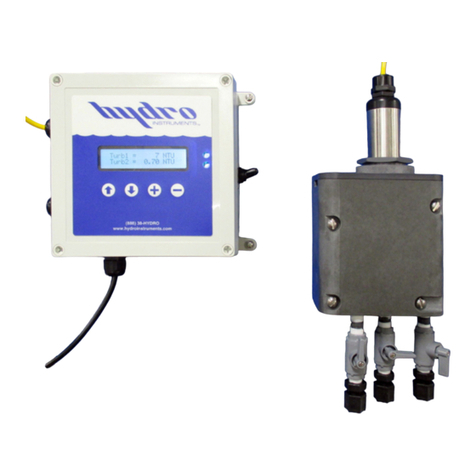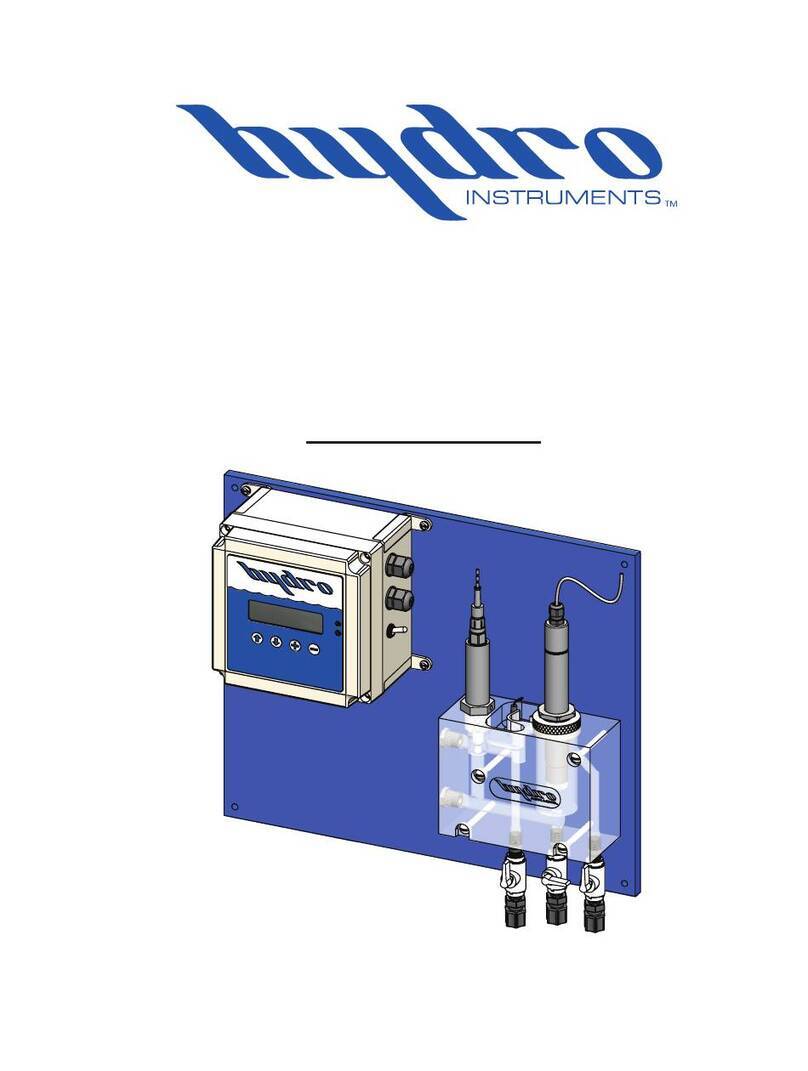
III. INSTALLATION
Refer to Figure 3 for this section.
1. Sample Water Connection and Control: The following are some considerations relating to the
sample water supply. The Series 210 Residual Chlorine Analyzer requires a constant supply of sample
water at a controlled rate and pressure. Precautions should also be taken to ensure that the sample
water reaching the measurement cell is not altered as it passes through the sample water piping. Also,
the connection to the sample point should be made in such a way to avoid receiving air or sediment
from the pipe. Consider fi gure 4 when creating your sample water line
Flow: As mentioned in the specifi cations in Section I, the sample water fl ow rate should be
controlled at 500 ml/minute (8 GPH). A fl ow meter and rate control valve may be necessary to
achieve and maintain this fl ow rate. This can be installed upstream from the measurement cell.
Pressure: Where the sample point has a water pressure higher than 5 psig, a pressure-reducing
valve must be employed to deliver the sample water to the measurement cell. The sample water
entering the measurement cell should be at a pressure below 5 psig. If the sample point pressure
is too low, then it may be necessary to use a sample pump to deliver the sample water to the
measurement cell.
Other Considerations: It should be considered, that any biological growth inside the sample
piping system will have some chemical demand. This can cause the sample water reaching the
measurement cell to not be an accurate sample. For example, the chlorine residual could fall as the
sample water passes through the sample water piping system. For this reason, it may be necessary
to periodically disinfect the sample water piping system to prevent any biological growth. Also, it is
generally not recommended to use a fi lter in this piping system because as the fi lter collects particles it
will develop a chlorine demand and therefore, the chlorine residual in the sample water will be reduced
by the fi lter, leading to inaccurate readings. However, in certain installations with signifi cant amounts
of solids in the sample water (particularly iron and manganese) the use of sample water fi lters may be
necessary.
2. Sample Water Disposal Considerations: If no reagent chemical is being injected, then the disposal
of the water departing the measurement cell is usually not a signifi cant concern. However, if some
reagent chemicals are being injected, then all applicable regulations should be considered before
making the decision of how and where to dispose of the wastewater exiting the measurement cell.
Refer to the MSDS of the chemical in question for instructions on proper disposal.
3. Sample Point Selection: Consider Figure 5 for this section.
There are at least two general concepts to consider when selecting the sample point location. First, is
to select a point that allows reliable determination of the chemical residual concentration at the most
critical point for the particular installation. Second, is to take into consideration the chemical injection
control timing. A balance between these considerations must be reached.
Each system is unique, however in general the goal of the chemical injection is to achieve some result
by maintaining a certain chemical residual concentration at a particular point in the system. For
example, to maintain a specifi c chlorine residual at the exit of the drinking water facility. The location
should be selected so that the injected chemical is already fully mixed so that an accurate sample can
be sent to the measurement cell.
WARNING! Do not run analyzer without sample water running through! Lack of,
or interruption of water fl ow to analyzer cell can overheat the motor and cause
premature failure.
7






























